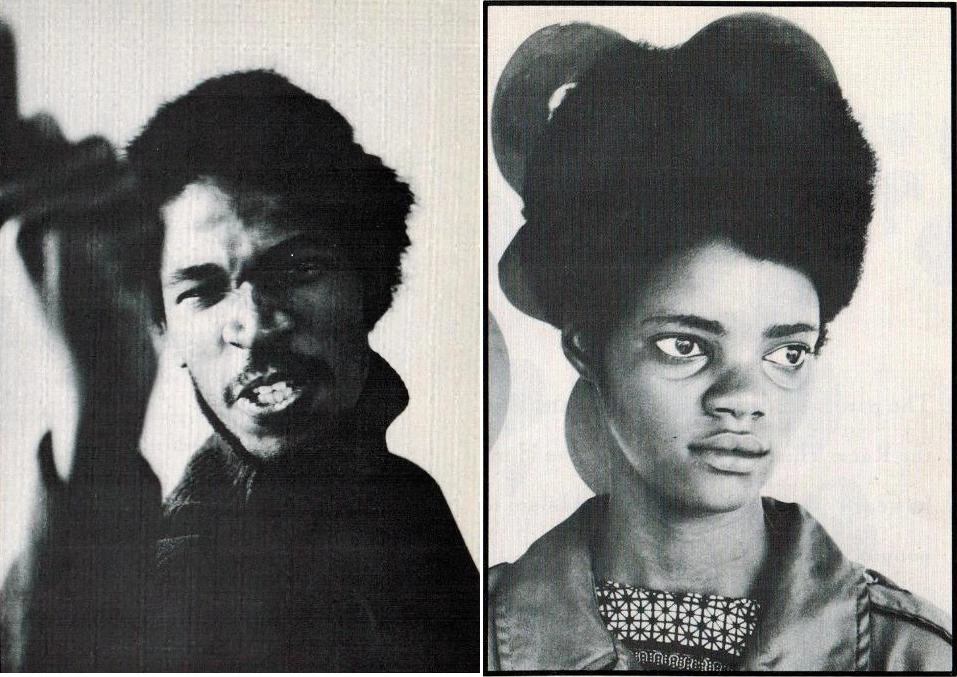https://old.bitchute.com/video/PkMqwIV85EX7/
#fakenukesphil #photographic #evidence
Phil Explains Why Photographs Are More Reliable Than Documents And Books
https://old.bitchute.com/video/PkMqwIV85EX7/
#fakenukesphil #photographic #evidence
Phil Explains Why Photographs Are More Reliable Than Documents And Books

From 'In Our Terribleness'
Photos by Fundi (Billy Abernathy)
-> In Our Terribleness (1970) I Designed by Laini (Sylvia Abernathy)
-> https://zocalopoets.com/2013/02/01/amiri-baraka-and-langston-hughes-throw-jesus-out-yr-mind-goodbye-christ/
-> https://zocalopoets.com/2013/02/01/they-now-gonna-make-us-shut-up-the-black-nationalist-third-world-socialist-poetry-of-amiri-baraka/

Image and poem by Imamu Amiri Baraka (Le Roi Jones) & Fundi (Billy Abernathy).
#InOurTerribleness #poetic #photographic #book I #poetry #design #photo #art
#ImamuAmiriBaraka #LeRoiJones I #Fundi #BillyAbernathy I #Laini #SylviaAbernathy






In the #1910s #August_Sander started to work on an ambitious project of "creating an inventory of the people of the #Weimar Republic", a #photographic cross-section of "all professions, all classes, all social levels", "from the unemployed worker to the industrial magnate", which he named later (in the #1920s) Man in the Twentieth Century. For this reason he is considered the #conceptualist inside the #objectively oriented #new_vision movement, and he became in fact a kind of photographic #sociologist.
Only one book of #Sander's body of #portraits was #published at the time - #1929 - under the title Face of Our Time, before the "repressive climate of the Nazis".
- photo 1: The Man of the Soil, 1910
- photo 2: Young Farmers of Westerwald, 1914
- photo 3: Coal Delivery Man, 1915
- photo 4: The Man and The Machine, 1926
- photo 4: Unemployed Man, 1928
- photo 5: Pastry Master, 1928
#best_photographers #history #new_objectivity #conceptualism #full_body_portrait



In #1890 #Jacob_Riis's impressive #photo_collection of "New York's immigrant poor and the tenements, sweatshops, streets, docks, dumps, and factories that they called home", that he started circa 1880, was published on an book titled "How the Other Half Lives".
Often shot at night with the newly-available #flash function—a #photographic tool that enabled Riis to capture legible #photos of dimly lit living conditions—the #photographs presented a grim peek into life in #poverty to an oblivious public. Jacob Riis: ...
#best_photographers #history #documentary #social_reform #nyc

#Woman #Dancing #Fancy #EadweardJamesMuybridge #English #Photographer #Pioneer #Photographic #Studies #Motion #Motion-Picture #Projection #AnimalLocomotion #Cinematography #History #Art #Our #World
Animal Locomotion by Eadweard Muybridge
Eadweard James Muybridge (pron.: /ˌɛdwərd ˈmaɪbrɪdʒ/; 9 April 1830 – 8 May 1904) was an English photographer important for his pioneering work in photographic studies of motion and in motion-picture projection. He adopted the name Eadweard Muybridge, believing it to be the original Anglo-Saxon form of his name. He immigrated to the United States as a young man but remained obscure until 1868, when his large photographs of Yosemite Valley, California, made him world famous. Muybridge is known for his pioneering work on animal locomotion in 1877 and 1878, which used multiple cameras to capture motion in stop-action photographs, and his zoopraxiscope, a device for projecting motion pictures that pre-dated the flexible perforated film strip used in cinematography.
In his earlier years in San Francisco, Muybridge had become known for his landscape photography, particularly of the Yosemite Valley. He also photographed the Tlingit people in Alaska, and was commissioned by the United States Army to photograph the Modoc War in 1873. In 1874 he shot and killed Major Harry Larkyns, his wife's lover, and was acquitted in a jury trial on the grounds of justifiable homicide. He travelled for more than a year in Central America on a photographic expedition in 1875.
In the 1880s, Muybridge entered a very productive period at the University of Pennsylvania in Philadelphia, producing over 100,000 images of animals and humans in motion, capturing what the human eye could not distinguish as separate movements. He spent much of his later years giving public lectures and demonstrations of his photography and early motion picture sequences. He also edited and published compilations of his work, which greatly influenced visual artists and the developing fields of scientific and industrial photography.